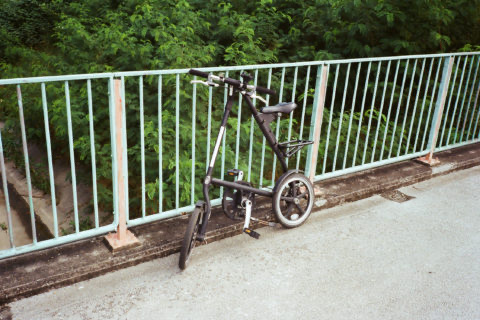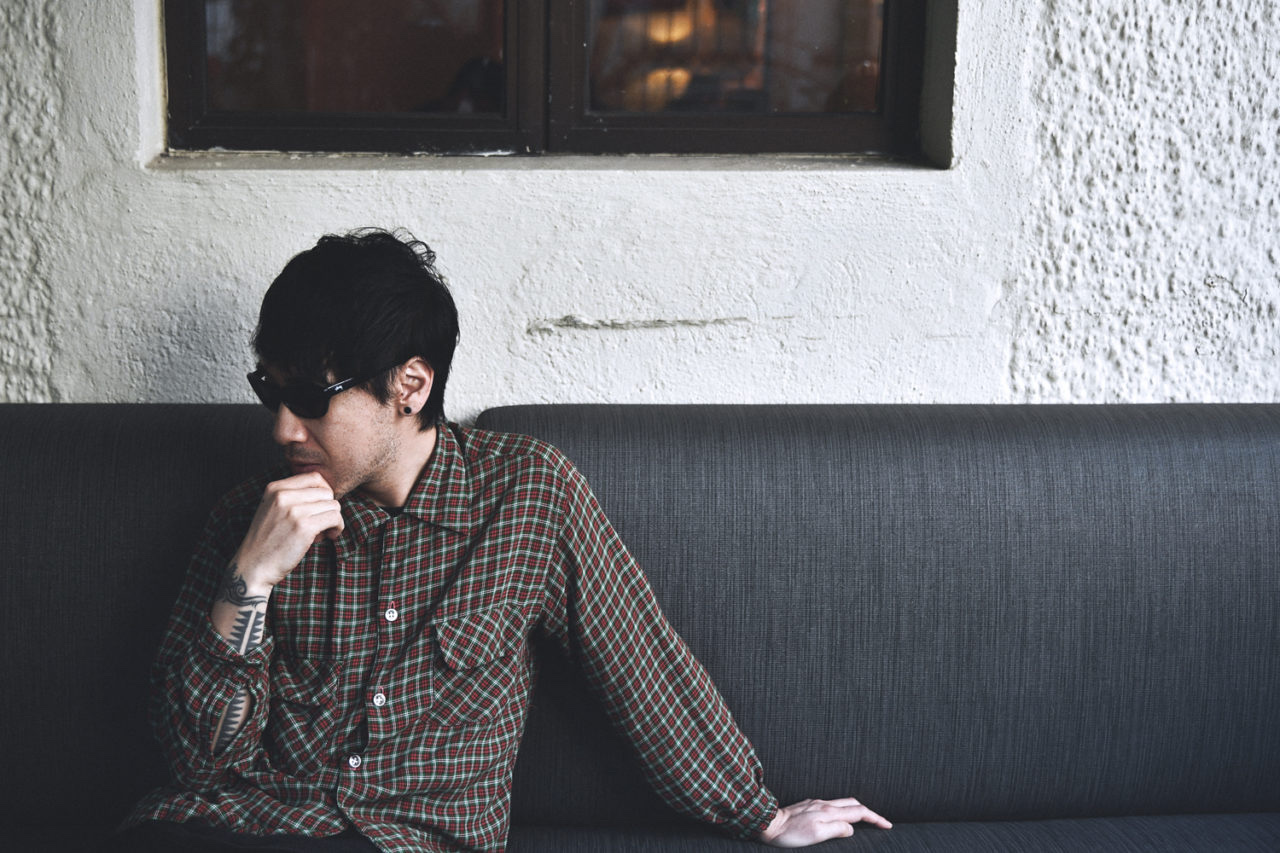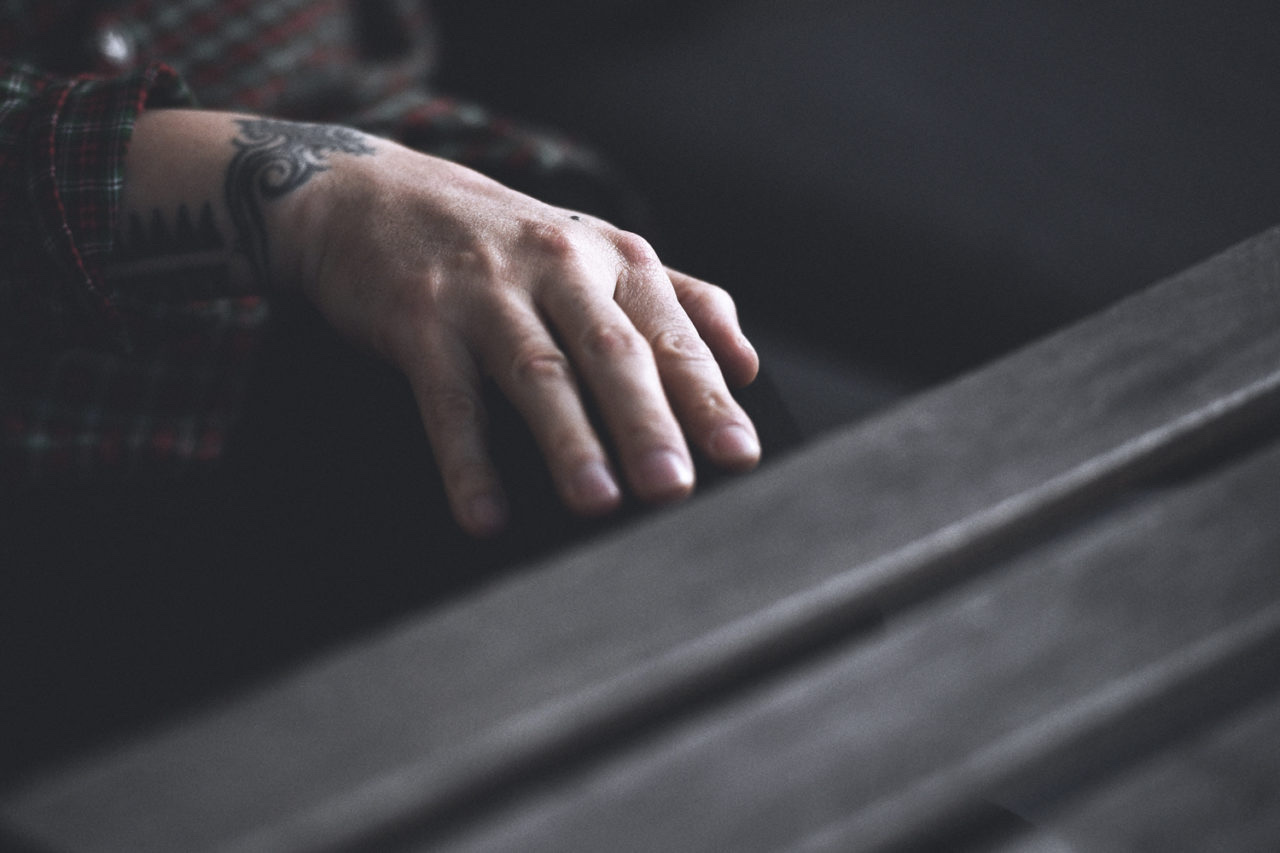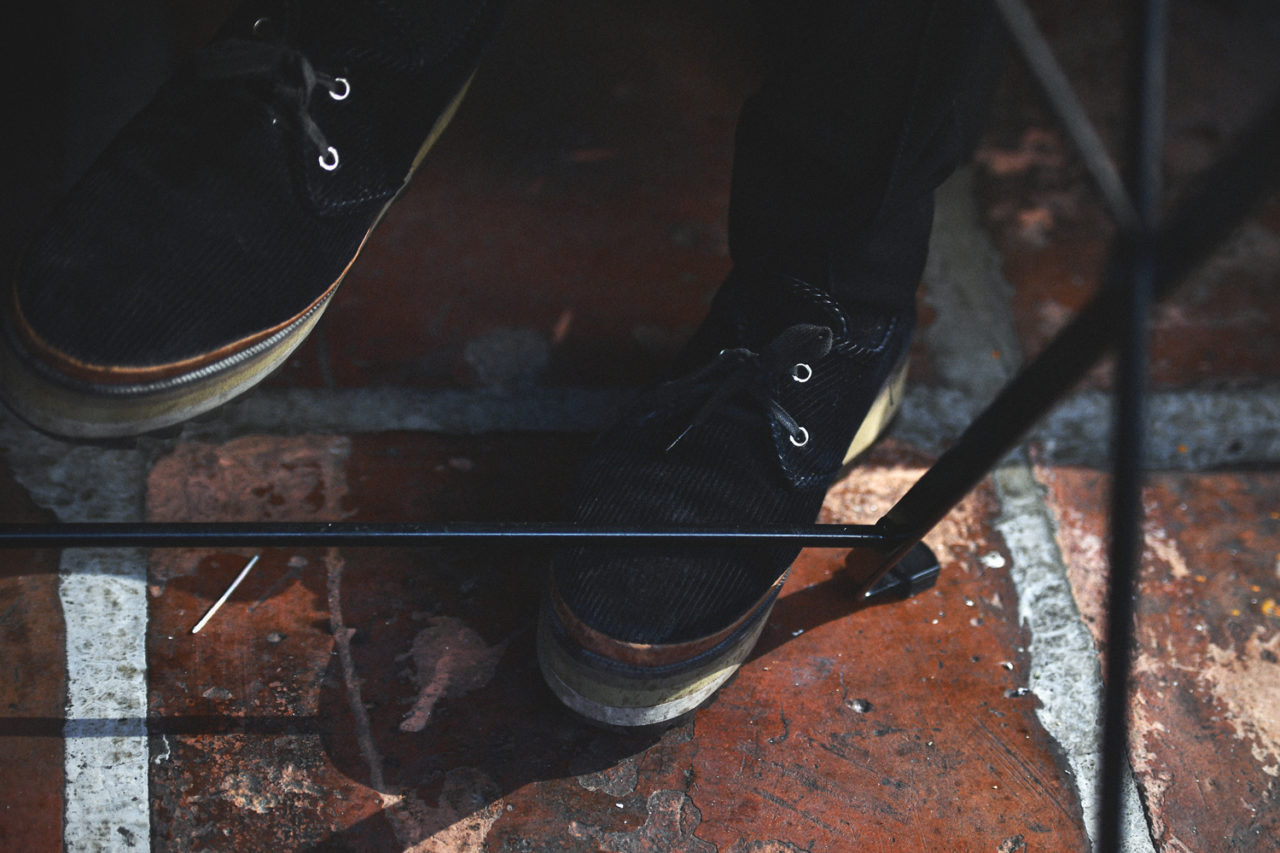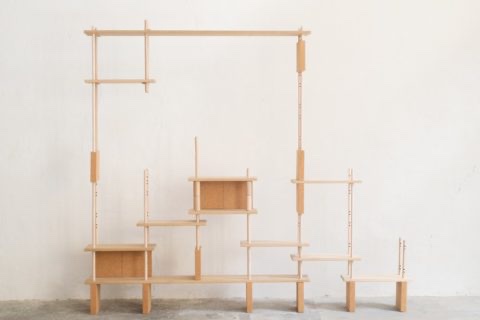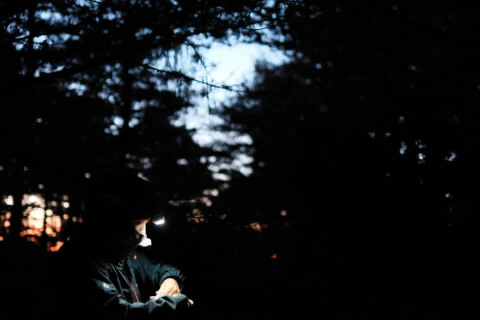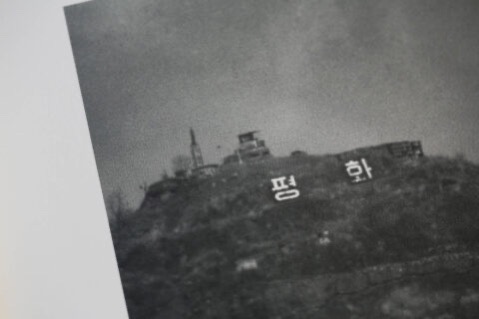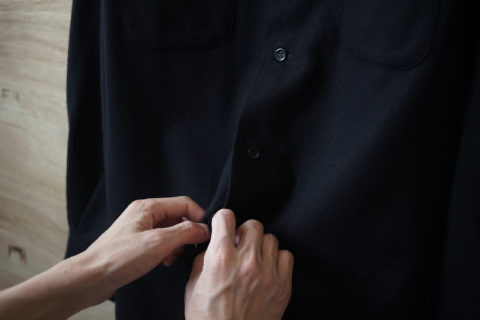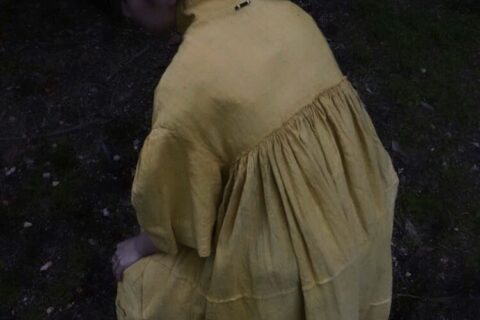Jun徐徐抽著菸,架著一副墨鏡,我看著微小的動靜來揣摩他的情感變化。在遇到難以即時回應的問題會沉默片刻去思考,有時會在回答中途與旁邊的Nobu先生(Hysteric Glamour主腦Nobuhiko Kitamura)自顧自聊起來,自然到好像是我闖進了這雙好友的日常對話。
看UNDERCOVER的設計,屢屢會看到音樂在Jun的人生裡勾勒出的時光軌跡,無論是在衣服上大剌剌地印上喜歡的樂隊歌詞或專輯圖像,抑或是以Joy Division傳奇大碟《Unknown Pleasures》的經典山脈圖案為創作妙思。如果設計是他的溝通方式,那音樂就是當中的重要符號。於是訪問期間我問到,能否用一首歌或一種曲風去形容對香港的印象,豈料陷入了一陣沉默,他說在最狂熱地汲取音樂養分的年紀,聽得最多是60s、70s的日本搖滾,對香港的印象只有李小龍的電影及其黃色戰衣。
十年前首次在香港開店,他親手佈置店內那大片花海,想起難忘,然而十年如此易逝。香港店的主題裝潢在數年前也轉換了,變成一萬五千顆燈泡懸於天花的藝術裝置與Joachim Patinir創作於十六世紀的畫作,仍然有其衝突質感,仍能看見屬於他的叛逆,這刻我更好奇Jun自身的變化。
Takahashi was smoking unhurriedly with his eyes covered by a pair of sunglasses. I tried to interpret the change in his emotion through observing his gesture to the tiniest details. Sometimes he paused and thought before replying to the tricky questions, sometimes he turned his head to casually chat with Kitamura (Nobuhiko Kitamura, founder of Hysteric Glamour), as if I were an intruder to his daily conversation with a good friend.
The influence of music on Takahashi in different phases of life can be easily traced in the design of UNDERCOVER. It can be the boldly printed lyrics or album covers of his favorite bands, or the renowned digital mountain peaks on Unknown Pleasures, the legendary album of Joy Division. If design is Takahashi’s medium to communicate, music is an indispensable symbol within. During the interview, I asked if he could conclude his impression on Hong Kong using a song or a music genre. To my surprise, the question has led us into silence. He then said the age that he most enthusiastically crave for music was pretty much dominated by Japanese rock from the 60s and the 70s. His only impression about Hong Kong was Bruce Lee and his yellow tracksuit.
It was a memorable moment when he personally arranged an enormous sea of flowers in the Hong Kong shop when the brand first landed in the city 10 years ago. 10 years have easily gone by. A few years ago, the theme decoration in Hong Kong shop was also changed to an installation made up of 15000 light bulbs hanging from the ceiling, as well as a painting by Joachim Patinir from the 16th century. The contradicting aesthetics of the two pieces of work is an evidence of Takahashi’s persistent wildness; this made me even more curious about the change of Takahashi as a person.
最近在聽什麼音樂?
都在聽黑膠唱片,什麼類型的都有聽,有時會邊聽音樂邊工作,但最近沒有。
最近有閱讀嗎?有沒有什麼書本或影畫是你在思緒混沌時會翻看的?
日常也有閱讀習慣,最近剛看完村上春樹最新一本書 —— 《騎士團長殺人事件》。然而當思緒混沌時,反而什麼都不會看。
對比十年前後,你的設計重心有轉向嗎?
最大改變是runway show的設計方法順序。以前會先想好一批衣服然後進行配襯,最後才理清整個show的結構與展現方式。近幾年則完全不同,我會先和三位主要成員定好一個主題,再延伸出各種細節,逐步定下了風格,調整完畢才真正去設計衣服,最後將設計好的進行配襯。這應該算是蠻特殊的創作順序。
那日常生活呢?例如家中的收藏取向的變化?
最新的收藏是黑膠唱片與古董唱機。近來終於購入整套設備,於是開始蒐集黑膠唱片,平日會自己去黑膠唱片店慢慢看、慢慢找,會好奇以前聽的一些音樂如果用黑膠唱盤播放,到底會是怎樣呢?才發覺,以前用iTunes聽的Jazz明明覺得很棒,但黑膠唱片的質感完全不同,便愈來愈深陷。
那麼,十年前喜歡的音樂,今天還喜歡嘛?又有沒有哪些從前討厭的東西,到今天反而接受了?
音樂是一旦喜歡上就不會生厭,過了多年偶爾突然想到曾經喜歡的一些音樂,還是會再聽。至於曾經討厭的東西,有的,最近還比較多遇到這種狀況,主要是80s的New Wave,還有The Smiths。
你說過跑步「是由一開始每次跑三十分鐘到之後跑一小時,由三公里然後愈來愈多,直到跑十公里變成了習慣。」這種狀態和你一直以來創作的狀態相似嗎?還有沒有別的習慣,是最接近這種持之以恆的狀況?
兩者其實不太相似。跑步對我來說是一種達成,完成後會煥然一新,像充滿電。
未來有沒有計劃做一些過去未及完成的事,或者是未曾嘗試過的事物?又有沒有哪些嘗試過、發覺自己不在行的事?
我個性上是個一旦有想法就會立即行動的人,然後開始了就一直走下去,用盡全力地,所以很少有想做但未做的事情。至於嘗試過但發覺自己不行的,應該是游泳吧,好像怎樣都不太出色,我還是一個適合在陸上生活的人吧。
Could you talk about your recent choice of music?
I’m listening to records of various genres. Sometimes I listen to music while working, but not lately.
Have you been reading lately? Is there any book that you would read when bewildered?
Reading is a habit of mine. I have just finished reading Haruki Murakami’s latest work Killing Commendatore. However, I don’t read at all when I’m feeling bewildered.
Has your design focus shifted in these ten years?
The greatest change can be seen in the workflow of preparing for our runway show. I used to first come up with the clothes to showcase, matching accessories come next, finalizing the structure and presentation was the final step. In recent years It has been radically changed. I now first come up with a theme with the three core members of the brand, before laying down some other details. We start working on the design of clothes after the style is determined, then it comes to the final stage of matching the designs with accessories. I believe this is a rather unusual work process.
How about your daily life? Have you begun any new habit in your collection?
My latest collections are vinyl and vintage turntables. Recently I have finally acquired a full sound system and therefore I started to collect vinyl records. I wander in vinyl stores and spend time wondering how would the songs that I used to listen would sound like when they are played on a turntable. Only until then I realized playing jazz music vinyl record is an experience that iTunes can never compete with — realizing this got me addicted to the vinyl sound.
Are you still a fan of the songs you liked ten years ago? Is there anything that you used to hate, but began to like in recent years?
My love for a certain piece of music never turns into distaste. There are some music that I suddenly think of after a few years but still enjoy listening. Recently, I have quite some experience of beginning to accept things that I used to hate, chiefly New Wave music of the 80s, as well as The Smiths.
When talking about running, you once mentioned “it all started with a 30-minute run, and then an hour run; Slowly building up from a 3 km jog, now it became a habit of 10 km run.” Is this more or less the pattern of your creative process? Do you have other habits that have similar persistence?
I don’t think they are similar. Running is some sort of achievement that can make me rejuvenated.
Are you planning to do something that you haven’t had a chance to finish before, or to try something new? Is there anything that you found yourself incapable of after actually trying?
I am the kind of person that react impulsively to a sudden thought; I continue working with full strength once started, therefore I seldom leave anything unfinished. I believe swimming is what I found myself incapable of after trying. I’m not able to master it, perhaps living on land just suits me way better.
最後我不其然想起,在Jun編集的一期《A Magazine》裡,他這樣說過:「I think of myself as really normal, but inside, I’m totally alien. What I make, what I create is totally alien. But my personality is normal. I’m an ordinary person.」
還有在訪問開始前,我拿出手機放在桌上準備錄音,他看到摔破了的螢幕,得悉是前一晚在UNDERCOVER香港店十週年的派對上摔到那樣四分五裂,他狐疑問道「真的嗎?」,然後咧嘴大笑了起來。
Towards the end of the interview, I recalled in one of the A Magazine issues curated by Takahashi, he said, “I think of myself as really normal, but inside, I’m totally alien. What I make, what I create is totally alien. But my personality is normal. I’m an ordinary person.”
Before the interview started, I took out my recorder and placed it on the table. Seeing the smashed screen of my recorder and learning it was from the party held on the previous night celebrating UNDERCOVER’s 10th anniversary in Hong Kong, with a doubtful face, he asked if it was for real. What followed his question was a hearty laugh.
